A Conversation with Minjae Kim
Minjae Kim is a South Korean-born artist based in New York City. With a background deeply rooted in architecture and interior design, his practice is now centred on highly figurative and imaginative furnishings and artwork.
I visited Minjae in Manhattan at Matter Gallery where he recently had a duo exhibition, in which his figurative and imaginative furniture pieces were placed in dialogue with paintings by his mother, MyoungAe Lee.
I want to start at the very beginning, from your upbringing in South Korea to your mother, MyoungAe Lee, who is a painter. Can you tell me about your childhood home and growing up with an artistic mother?
⎯⎯⎯ Needless to say, my mother had a huge influence on me and she continues to be an influential figure in my life now. We always had a dedicated space for her creative practice in addition to our living spaces, which carried an importance to our family. When I was in kindergarten, my mother had a small object store, and when I was in elementary school, she had a room dedicated to her painting and ceramic work where she would also hold classes. We couldn’t quite afford to rent a studio space for her, so we would always find a place slightly bigger than what was needed for a family of three, then use the extra space as her studio. There was always this elevated dedication to art at home, beyond just living.
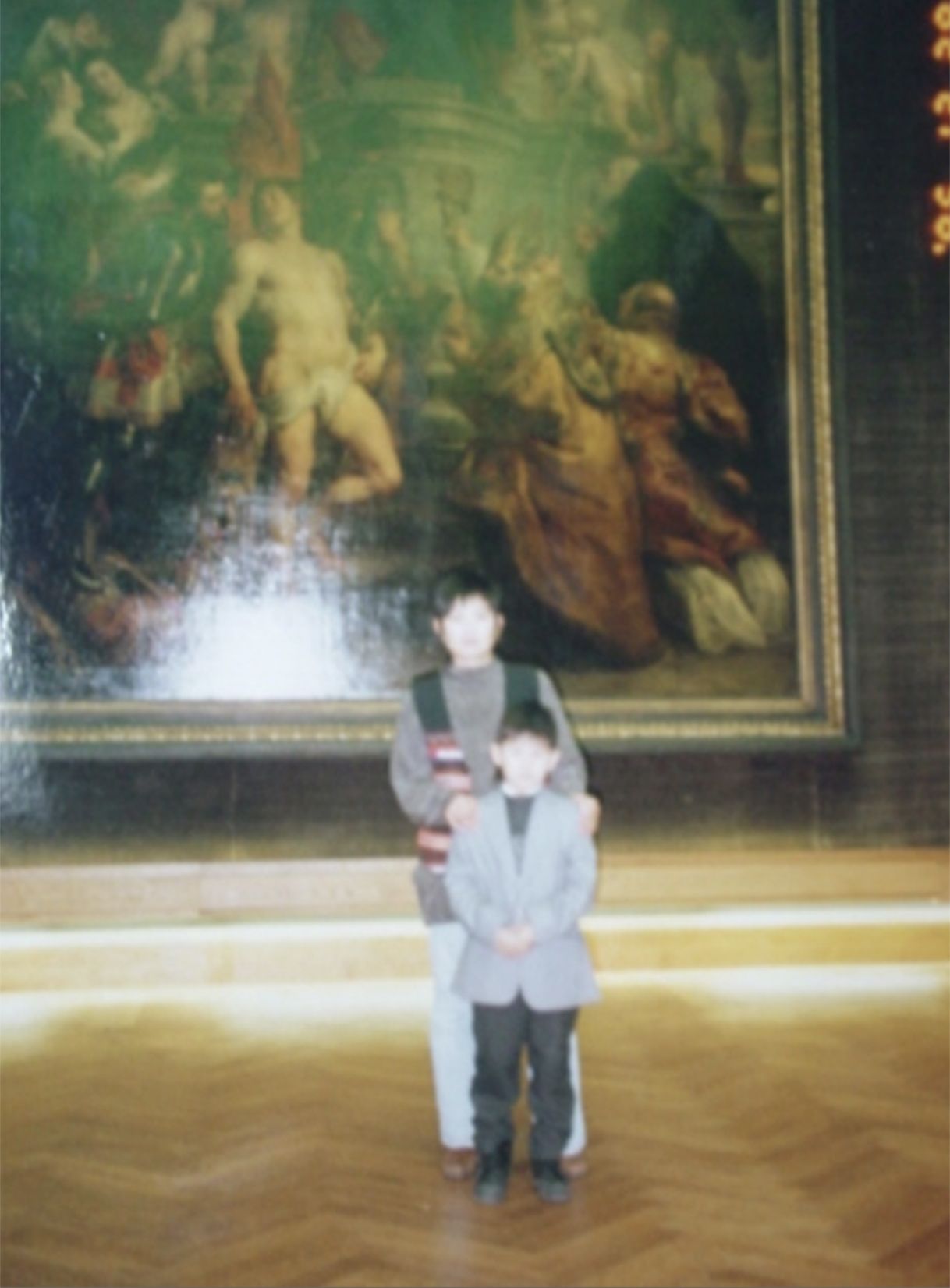
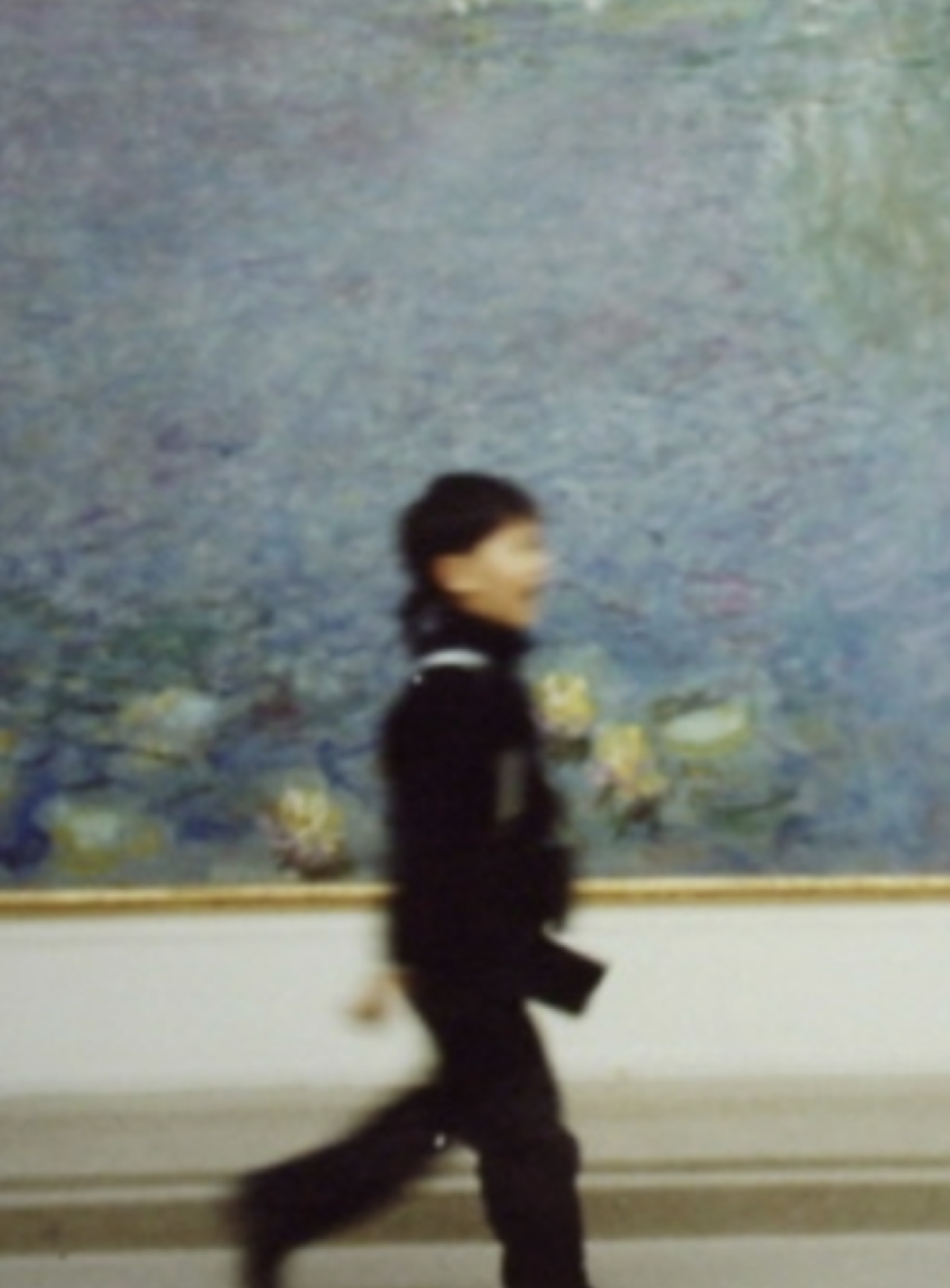
How has your father influenced your practice?
⎯⎯⎯ My father is not an artistic person, but he had a lot of appreciation for it which probably rubbed off from my mother. He is a Won-Buddhist priest (Won-Buddhism is a Korean modern Buddhism which has around 100 years of history), so there was plenty of spirituality to go around. Between the two, I grew up with a pretty strong sense of value beyond the everyday. Which, I did find frustrating at times when I was growing up but then extremely valuable once I was in my 20s, especially living abroad, alone and without the parents.
What elements of your South Korean upbringing are present in your work today?
⎯⎯⎯ How my upbringing and Korean identity affect my work is a difficult thing to untangle. Currently, I feel that some of it is expressed as a means to resist conformity. It is much easier to say that my Korean upbringing is present through material sensibility or serenity in my work, but the truth is that I find myself tapping into my Korean identity when I’m resisting certain standards in the western world. Or, when I simply don’t understand it, which alienates me and forces me to reflect on my upbringing, which can sometimes become a footing for my work. But, most of the time I’m not thinking about whether my work is Korean or not.

This recent exhibition, ‘MyoungAe Lee in conversation with Minjae Kim’ at Matter is a duo show with your mother and a USA debut for her. In the past, you’ve strived to show her paintings alongside your work; what was the experience of organizing an exhibition together?
⎯⎯⎯ For myself, the most important aspect of organizing this exhibition together in the context of my relationship with my mother is that I was given a chance to fully share the world that I have been building around myself for the past few years. It was a rare opportunity for me to share an intense and personal work process to its full extent with her. We had only existed in each others’ lives through momentary glimpses ever since I left Korea in my late teenage years. Working with her in this way, probably showed her a full view of her son’s life better than any other way possible. Definitely much more intimate than her last visit which was for my graduation from grad school.
Did you have any unexpected results from organizing this exhibition together?
⎯⎯⎯ Installing the show was an interesting experience. My mother's approach to hanging paintings as a painter was completely different from my approach which is based on architecture and interior design, where you’re creating a comprehensive environment. I was quite excited to hang her shaped canvas work in front of a curtain on the Western wall of the gallery, but she was quite skeptical of it. We are also both quite stubborn so we definitely had some arguments, but in the end, I think we were both quite pleased with it. Or, she may have just allowed me to have it my way. We haven’t quite unpacked all of that yet.
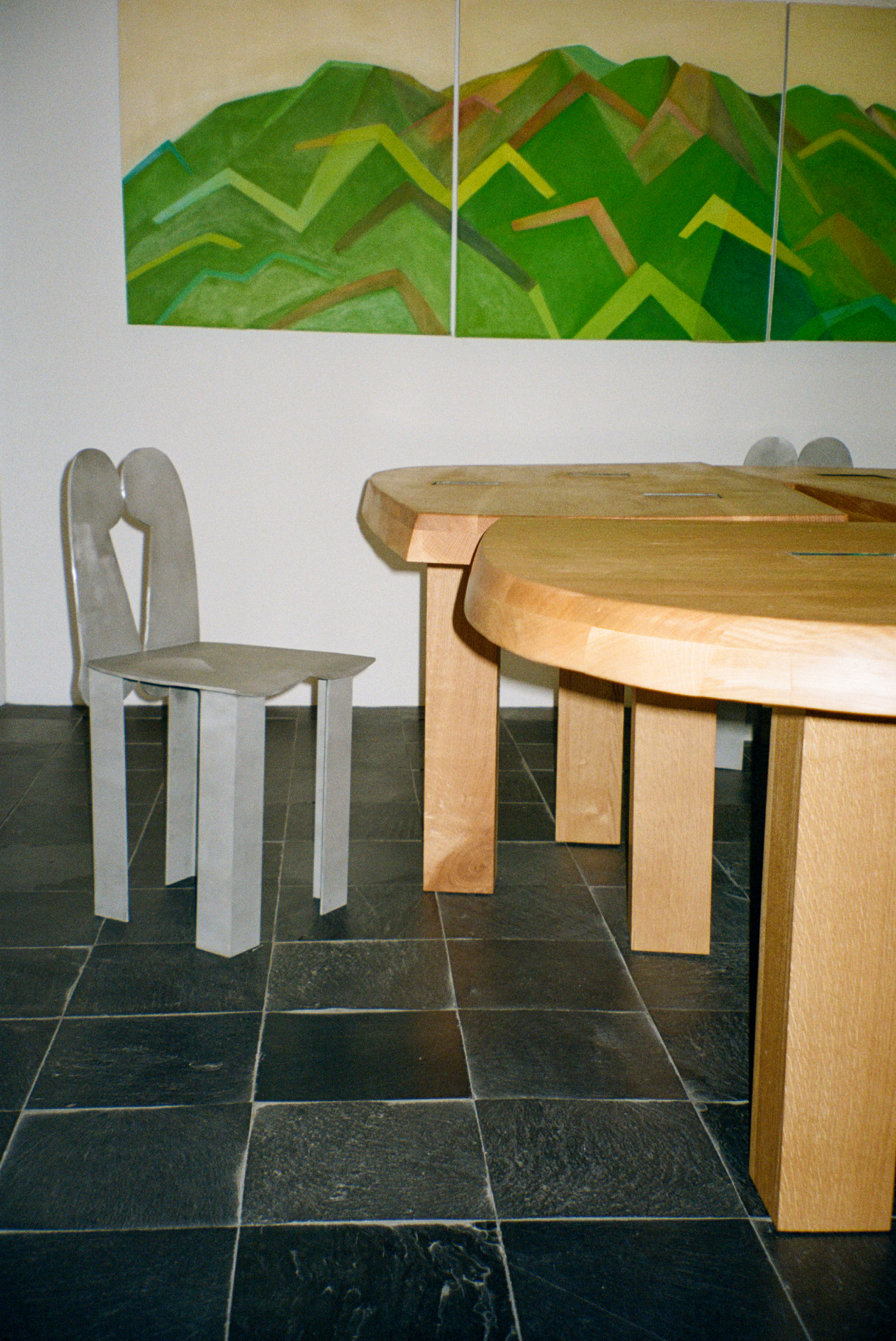
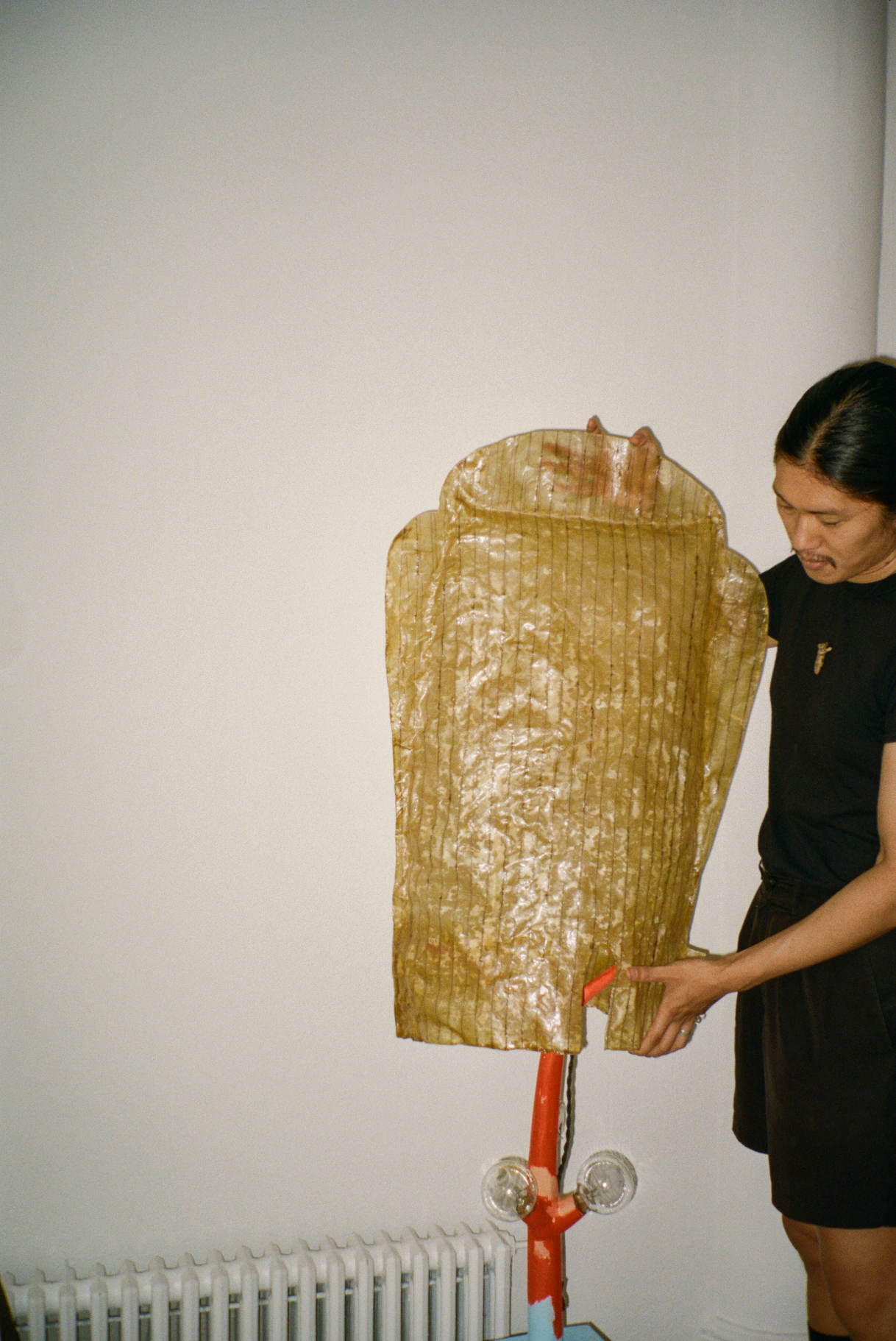
You have extensive training in the field of Architecture, with a Masters from Columbia and an undergrad in Architecture and Painting & Drawing from the University of Washington. Shortly after graduating, you began working at Studio Giancarlo Valle, a position you recently left to dedicate your time to your practice in furniture and objects. What have you felt is the most rewarding aspect of focusing on your own practice?
⎯⎯⎯ Being able to have my own practice and being able to dedicate all my time and effort and moreover other people’s hours, as well to realize my vision, gives me an incredible sense of attainment and gratification. Now I realize, that all the studies and work I’ve done up until this moment has been to do this in whatever form it may take in the future. So I’m immensely grateful to have this practice and always anxious and nervous that I will somehow lose it. Because of this anxiety and my own personality, I often look away and try to ignore the challenges of running my own studio.
What are some of the challenges of running your own studio?
⎯⎯⎯ I love to pretend the things that dread me simply do not exist, until they cause me real trouble, like a dental cavity or tax days. So, there are many challenges in my practice but it’s very foggy in my head. I guess paying the bill is the biggest challenge. Engaging with strangers that know my work is a new challenge I’ve been facing as well. My head fogs up a bit and I just repeat “thank you” like a robot. I feel a need to come up with a better repertoire that allows me to be more engaged.
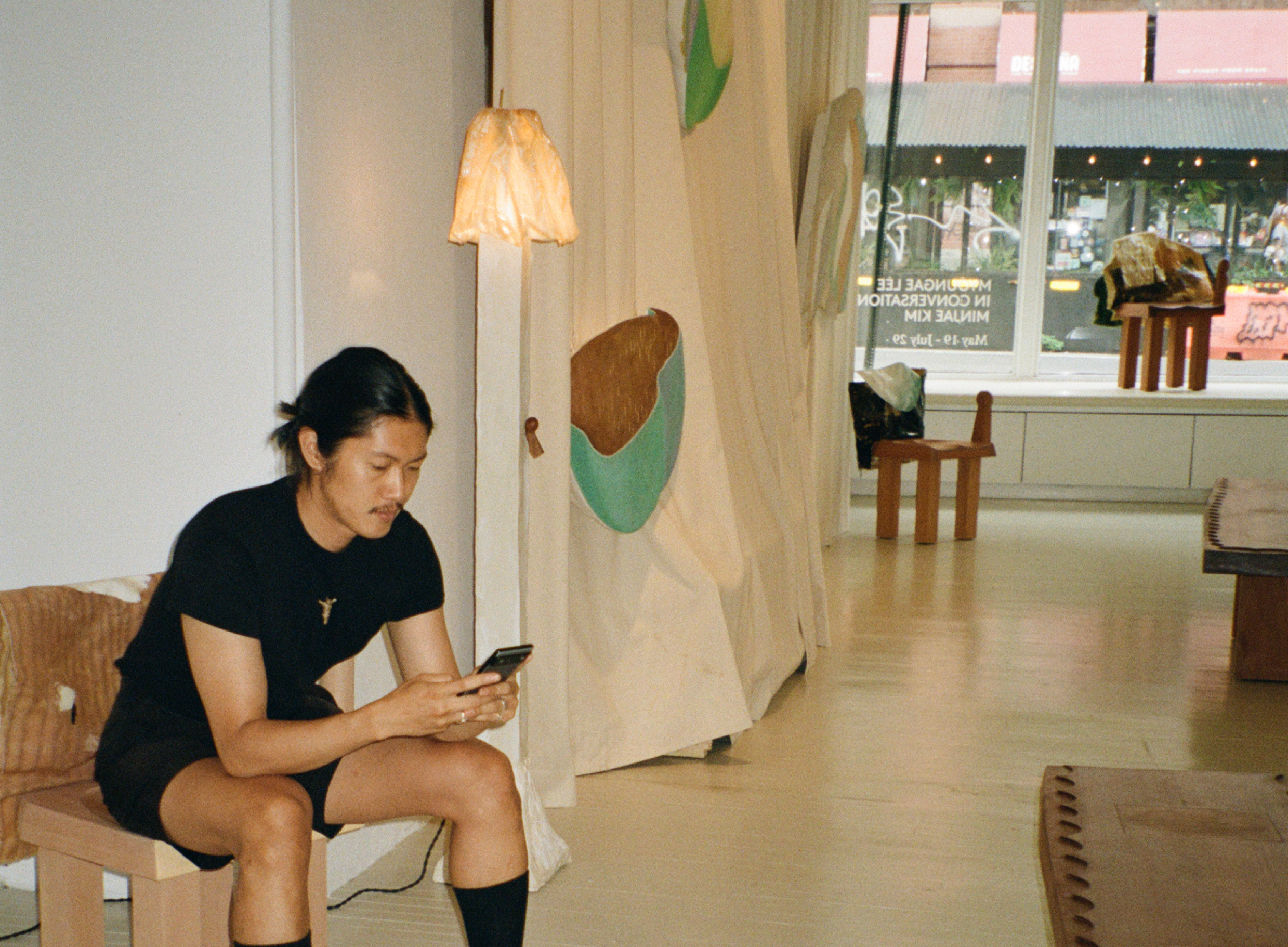
Your works have imperfect, unexpected and emotional elements which feel so different from the work that is typically found in the field of architecture, where everything is calculated and purposeful. For example, the vase Composition with Pipe that you showed at Sized in Los Angeles had an unexpected blue square. On a prior occasion, I asked you about it and you said that there was no reason for it, you simply wanted to have it there. Did you ever feel restricted in your expression working in architecture and interiors?
⎯⎯⎯ When I was in my undergrad, first studying and learning about modern design and the utopian ideology of problem-solving through architecture, I was fully on board. By the time I was in grad school after a few years working and being in the Korean military, I found myself much more interested in the layers between architecture, which is called life. The tools and expressions we had in school that are heavily based on logic, never seemed enough to capture that. I would spend night after night drawing scale figures trying to project made-up lives and narratives into the design I was working on in order to capture the emotional layer I was interested in. So often the part in your life that captures you is not something that’s designed or planned, such as the blue square that left an impression on you. I wanted to be able to meddle with that and found it challenging in architecture or interiors, or at least knew that it would be years out until I could find any opportunity at that scale. Now, the lessons I learned from architecture operate more as a vehicle to lay out a sense of order in my work. So when I break it’s broken, there is more impact. Of course, I’m sincerely looking forward to someday scaling my work back to space and buildings.


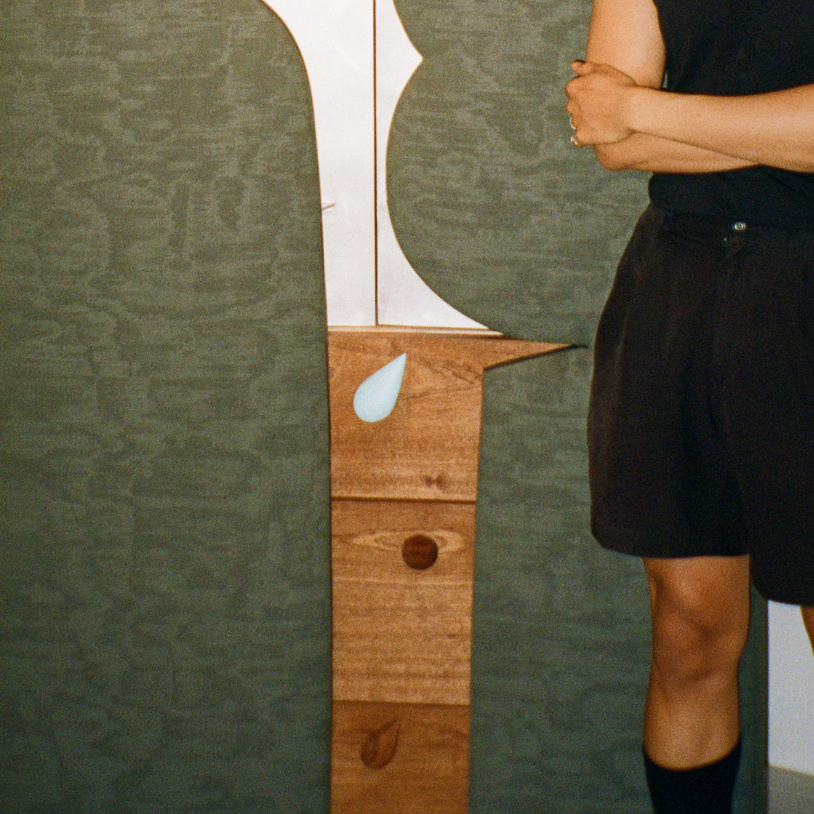
Many of your works have recognizable images such as raindrops or portraits, and in the Matter show, very evidently the chair, “Rug from Bucha” depicting two victims of war under a tapestry. Is the figurative imagery something that starts the idea of a piece, or does it develop and emerge while you’re working on it?
⎯⎯⎯ I love operating in a figurative world. There is so much precedent of that in human history that I don’t think I even need to address why or how we are so drawn to it. Recognizable or relatable forms can capture one’s emotions so much more effectively. So, although sometimes abstracted and obscured, I love to play with it. What also excites me in the process is how a figurative idea can evolve and develop over iterations. In other words, each iteration has to be fairly precisely planned and thought through, it is able to be flexible and evolve over a body of work.
– East Room is a shared workspace company providing design-forward office solutions, authentic programming and a diverse community to established companies and enterprising freelancers. We explore art, design, music, and entrepreneurship. Visit our news & stories page to read more.